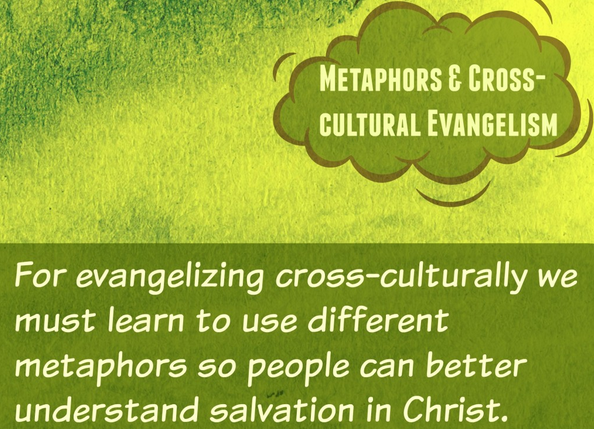A Simple Evangelism Method
Originally posted at EvangelVision.Com
I distinctly remember a 2006 conversation with a young Central Asian man named Farhad. It completely changed how I understand and share the gospel. After class, we were standing outside having a conversation about God. There was an open door to share the gospel, so I said something like, “You’re sins make you guilty before God, and you will be punished if you don’t receive Jesus’ forgiveness.” Farhad’s eye brows bunched up with a look of sincere confusion, as if I was speaking an entirely different language.
Like most people in Central Asia, Farhad hardly sensed personal guilt, so he did not seek forgiveness from God. Moreover, my use of legal language to explain the gospel (i.e., guilty, punishment, forgiveness) was difficult for Farhad. The courts in Central Asia are notoriously corrupt—verdicts depend much more on who people know than what actually happened. So using legal metaphors to explain the good news to Farhad was unhelpful. That incident forced me to reexamine my gospel witness, especially my metaphors.

How Metaphors Work
We use metaphors to organize and explain reality. As an example, consider the meaning of these metaphors for people: He’s a rat! She’s an angel! You’re my sunshine! A metaphor borrows knowledge from something concrete to explain something abstract—“time is money,” “life is a journey.” Metaphors are not just for poetry, but for explaining life. Metaphors saturate our theology and evangelism as well. How else could we explain abstract ideas like God or salvation? We use earthly language from our everyday experiences to communicate spiritual realities—“I was lost,” “God is a rock,” “the church is a body.”
Legal Metaphors in Theology
Westerners favor judicial metaphors. We use legal language to portray salvation as a big courtroom scene—God is a just judge, we are guilty of violating the Law, Jesus payed our penalty and satisfied justice, we are forgiven of our transgressions and reckoned innocent. Great Christians thinkers like Augustine, Luther, and Calvin were educated as lawyers, so it makes sense they used legal imagery to communicate theological truths. Note how these judicial words commonly appear in Western presentations of the gospel:
Law Transgression Judgment Appeasement Judge Right/wrong Rules Acquittal Correction Condemnation Innocence Penalty Sacrifice Individual Punishment Forgiveness Personal Merit Debt Payment Commands Wrath Guilt Sacrifice Justice Pardon Works
Using New Conceptual Metaphors
But, what happens when we use legal metaphors to share the gospel with someone like Farhad, or someone from a tribal culture where there are no courts? Wouldn’t other biblical metaphors be more appropriate for explaining how we can know God? Culture influences how people hear metaphors. Christian anthropologists identify three types of cultures, each based on people’s primary response to sin.
- Guilt cultures (individualistic, Western) emphasize legality and justice.
- Shame cultures (collectivistic, Eastern) value relationships and honor.
- Fear cultures (animistic, tribal) seek power and blessing.
American culture is mostly guilt-based. Meanwhile, non-Western cultures are generally shame-based and/or fear-based. This means other metaphors, like family or warfare, intuitively make more sense to them.
For evangelizing cross-culturally we must learn to use different metaphors so people can better understand salvation in Christ. As Aristotle said, “The greatest thing by far is to have a command of metaphor.” Fortunately, the Bible is rich in metaphors of family and warfare. These two articles explain this process in more detail:


AfriCAN based I am very interested in making use of the honor/shame framework to express the real Gospel. Jesus paid the full price required on our behalf for our forgiveness, as expressed in the legal metaphor. How does the price relate to honor/shame
We had the famous TRCommision, but it appears to me to have only partially succeeded due, in my thinking, possibly to the fact that there was no one who could pay the price involved for those who sinned in the past.
Reg, I’ve been looking into this more, as I grew up in a strong honor/shame culture, and a few thoughts towards this is something from the perspective of Kingdom. That of belonging as a son or daughter of the king. Being born into the inherited shame of Adam/Eve, who brought shame upon themselves that created distance from God, their creator. God cared so much about the relationship with Adam/Eve, and all the descendants, that he pursued us humans throughout history to restore that relationship. God ultimately took our shame upon himself on the cross to wash our hearts clean, make us worthy, to make us honorable, to restore relationship with the King. He’s invited us into his family, delights in us as his children, and is preparing a place in heaven where that relationship will be ultimately experienced in it’s full glory. We desire to bring honor to God through our lives, as citizens of his kingdom, with a desire to adopt his kingdom culture (radical forgiveness, generosity, hospitality, victory over the bondage of sin, etc) as our own. How does that resonate with you?
Excellently stated!